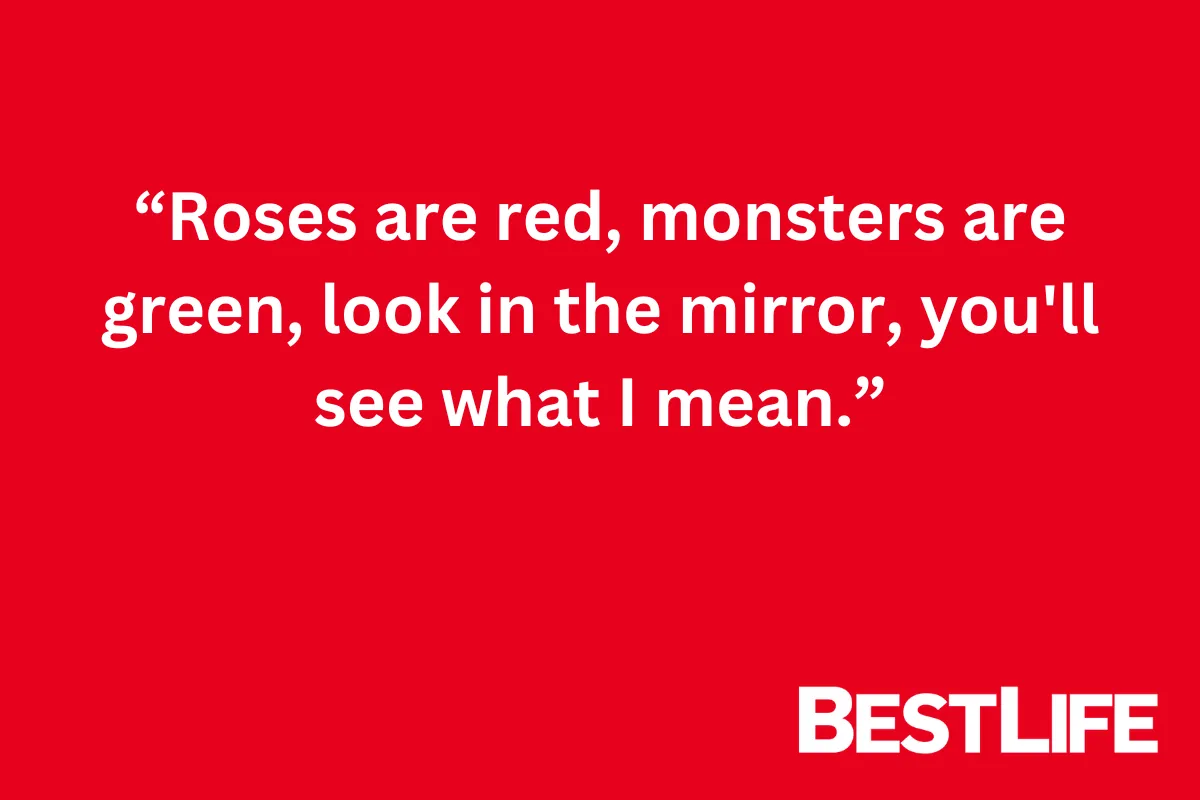Roasts That Hurt and Rhyme: The Art of Verbal Combat

Roasts That Hurt and Rhyme is an art form. It’s not just about throwing shade or mocking someone; it’s about precision, timing, and a certain lyrical flair. But when you combine a roast with rhyme, it transforms into something almost poetic—a verbal punch that lingers long after it lands. In this article, we’ll dive deep into the world of Roasts That Hurt and Rhyme, exploring what makes them effective, how to craft them, and why people are so drawn to them.
The Anatomy of a Rhyme-Based Roast
Roasts That Hurt and Rhyme are a unique subset of humor. Unlike casual insults, they require thought, creativity, and a sense of rhythm. At their core, these roasts are structured like poetry, relying on the musicality of language to amplify the sting.
First, let’s break down the structure. A strong rhyming roast usually consists of a setup and a punchline, similar to traditional jokes. The setup establishes the target’s weakness or quirk, while the punchline lands the insult in a witty, often unexpected way. The rhyme ties it together, making it more memorable and, surprisingly, more painful. Imagine a line like, “You claim to be fly, but I think you just try.” The rhyme makes it catchy, and the wordplay makes it sharp.
Secondly, timing is everything. Even the cleverest rhymes can fall flat if delivered at the wrong moment. In verbal duels or social settings, observing your audience’s mood is key. A perfectly timed rhyme hits like a verbal right hook—it’s the difference between being admired for your wit and being ignored for trying too hard.
Finally, rhythm matters. When you deliver a rhyming roast, you’re performing. The cadence, emphasis, and flow all contribute to the overall effect. A line that stumbles or drags can ruin the impact. Mastering this balance of content, rhyme, and rhythm is what separates casual insults from Roasts That Hurt and Rhyme leave a lasting impression.
Why Rhyming Roasts Hit Harder

There’s something almost cruelly satisfying about a Roasts That Hurt and Rhyme. It’s not just the content—it’s the way your brain processes it. Rhyme makes language more memorable. It triggers a sense of completion in the listener, which means the insult lands in a way that sticks.
Psychologically, rhymes force the brain to engage more actively. When someone hears a clever rhyme aimed at them, they have to mentally process both the insult and the wordplay. This dual engagement makes the blow feel sharper and more personal. The insult doesn’t just skim the surface—it burrows in.
Culturally, Roasts That Hurt and Rhyme are celebrated in everything from rap battles to comedy shows. These settings show that people admire wit over brute insult. A rhyme conveys intelligence and verbal agility. When you can roast someone and make it poetic, you elevate the exchange beyond petty argument into a showcase of skill. In essence, it’s not just about hurting feelings—it’s about proving you can think on your feet and craft words that sting elegantly.
Crafting Your Own Rhyming Roasts
If you want to master Roasts That Hurt and Rhyme , practice is essential. Start with observation. Notice quirks, habits, or predictable behaviors that you can exaggerate in a playful but cutting way. Remember, the best roasts are personal but clever—they reveal truths in a way that entertains as much as it wounds.
Next, think in pairs of rhyming words. Don’t force them—let them emerge naturally. For instance, if your target is always late, you might rhyme “tardy” with “hardly,” or “slow” with “no-go.” The key is to make the rhyme feel effortless. Forced rhymes feel awkward and lose the sting.
Finally, refine your delivery. Writing a rhyme is only half the battle. Practice saying it aloud. Pay attention to which words you emphasize, how fast or slow you deliver the punchline, and how your tone can amplify the insult. A masterful rhyming roast doesn’t just rely on words—it relies on the performance, timing, and subtle cues in your voice and posture.
Classic Examples of Roasts That Rhyme
Let’s examine a few examples of rhyming roasts to see what makes them work. Consider the line:
“You talk a big game, but your fame’s just a name.”
Here, the rhyme between “game” and “name” emphasizes the insult while keeping it snappy. Notice how it balances wit with criticism.
Another example:
“Your style is weak, your rhymes are meek.”
This is almost playful in its simplicity, yet it cuts because of the repetition and rhythm. The rhyme reinforces the message and makes it stick.
Lastly:
“You boast and you brag, but your skills just lag.”
Each of these lines follows the formula of setup + punchline + rhyme, showing that with careful construction, a roast can be both clever and cutting.
Avoiding Common Pitfalls
While Roasts That Hurt and Rhyme are powerful, they’re not without risk. A poorly constructed rhyme can make you look silly rather than sharp. Avoid forced rhymes, overcomplicated wordplay, or insults that feel mean-spirited rather than witty. The goal is to impress, not alienate.
Also, context matters. A roast that’s hilarious among friends might be offensive in a professional or formal setting. Understanding your audience is crucial. The best Roasts That Hurt and Rhyme show insight into your target’s personality without crossing a line that makes the exchange uncomfortable or damaging.
Lastly, don’t overdo it. One well-placed rhyming roast is far more effective than ten mediocre attempts. Strategic use amplifies impact; overuse dilutes it. Like seasoning in a dish, a little goes a long way.
The Joy and Skill of Verbal Sparring
At its core, Roasts That Hurt and Rhyme celebrate creativity, intelligence, and confidence. They’re more than insults—they’re a form of social play, a game of wits. Crafting and delivering a perfect rhyming roast requires quick thinking, observation, and linguistic skill.
For those who enjoy verbal sparring, it’s also immensely satisfying. The audience reacts, the target responds, and everyone witnesses the artistry of language in action. The best Roasts That Hurt and Rhyme are those that make people laugh, think, and maybe blush a little. It’s a unique form of expression where wit and wordplay combine to create impact.
Whether you’re a casual jokester or a budding rap battler, honing your ability to craft rhyming Roasts That Hurt and Rhyme will set you apart. You’re not just insulting—you’re performing, entertaining, and showing mastery over language itself. And when done right, the sting is unforgettable.
Conclusion
Roasts That Hurt and Rhyme occupy a special space in the world of humor. They are clever, memorable, and often devastatingly effective. By understanding their structure, mastering timing, and refining delivery, anyone can learn to wield this form of verbal artistry. In the end, it’s not just about hurting feelings—it’s about celebrating wit, wordplay, and the timeless appeal of a perfectly crafted insult.
With practice, observation, and a little daring, you can create rhymes that land with precision, leaving your audience impressed and your target speechless. The art of the rhyming roast isn’t dying; it’s evolving—and those who master it become legends in the subtle, sharp world of verbal combat.




